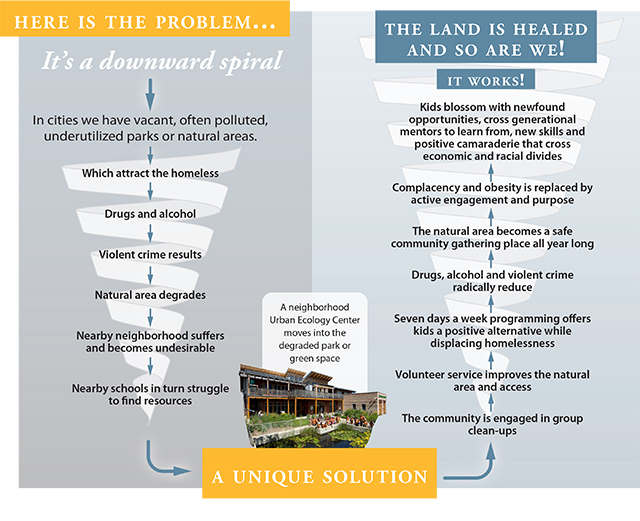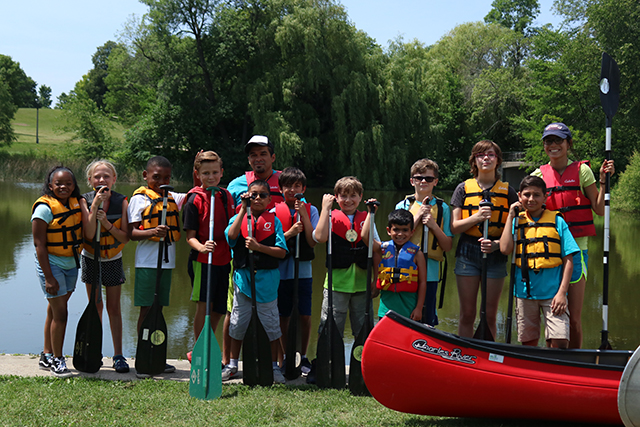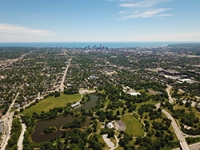Builders of great cities insisted that people in those cities needed great parks. “People need parks” became a compelling slogan. City planners kept at it generation after generation.

Photo: Tyler Yomantas
In 1961, Jane Jacobs criticized those urban architects who prescribed the building of parks to treat the woes of society. She wrote that instead of people needing parks, parks need people! In too many cities, Jacobs observed that the parks remained empty, waiting for the fulfillment of the city planners’ prophecies. For more than 50 years now, Jacobs has inspired new approaches to urban renewal, often at the margins of official city planning commissions, but aimed especially at addressing concerns about social justice. These efforts engage residents in reversing the decline they see around them.
The Urban Ecology Center model represents the most comprehensive fulfillment of an integrated vision of urban revitalization, unifying the ideals of great park designers, reformers, and strident community activists.

The Urban Ecology Center forms a turning point, the solution, in a double spiral. A neighborhood with social and economic challenges begins to decline and problems multiply. With vacant land that has degraded over time, with illicit activity and abandonment, with struggling schools and few jobs, the community struggles to find a turning point. Property values seem only to go lower. Urban Ecology Center has created a model where a small, dedicated neighborhood team cleans up the vacant land in a crime-ridden park, beginning the reversal of the spiral.

Together, the community and the Center begin bringing students to the space on field trips and welcoming kids to the park with programming available every day of the week. Now the upward spiral gains momentum. This process reduces crime, produces jobs and economic opportunity, and brings the neighborhood back to life.
Learn more about how to leverage a new approach to bringing people to parks by attending the 4-Day Intensive Workshop in Milwaukee, Wisconsin July 22-26.
Learn about Urban Ecology Center's 4-day Intensive here.
Written by: Chris Young, Ph.D., History of Science and Technology

Chris Young is a professor of Biology at Alverno College, where he has taught since 2002. He teaches courses on global warming, evolution, natural history, and science education, in addition to introductory biology. Prior to coming to Alverno, Young was the assistant director of the Center for 21st Century Studies at the University of Wisconsin – Milwaukee. He also previously worked as a pollution control specialist for the Minnesota Pollution Control Agency.





